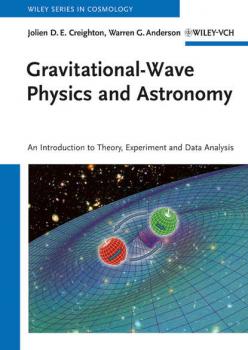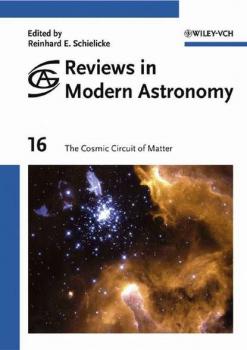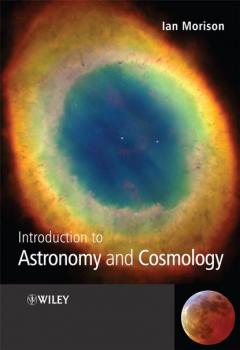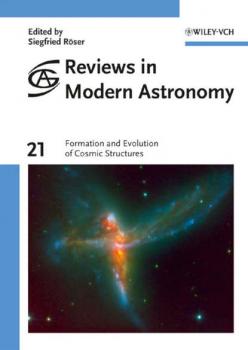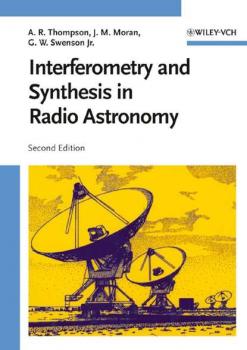Физика
Различные книги в жанре ФизикаGravitational-Wave Physics and Astronomy
This most up-to-date, one-stop reference combines coverage of both theory and observational techniques, with introductory sections to bring all readers up to the same level. Written by outstanding researchers directly involved with the scientific program of the Laser Interferometer Gravitational-Wave Observatory (LIGO), the book begins with a brief review of general relativity before going on to describe the physics of gravitational waves and the astrophysical sources of gravitational radiation. Further sections cover gravitational wave detectors, data analysis, and the outlook of gravitational wave astronomy and astrophysics.
From First Light to Reionization
This up-to-date and concise account of a critical period of the early universe directly links the latest theories and experiments. Targeted at cosmological problems rather than specific methods, it begins with an introduction reviewing the early universe and looks at why reionization is important. The process of reionization analyzes simple analytical considerations and compares existing observations, while a further chapter describes some of the issues regarding the transition from Population III to Population II stars, as well as the constraints that can be derived from WMAP. Further chapters survey the latest numerical modeling and future perspectives for studying the dark ages using galaxies as probes. Written by a scientist with much experience in both research and writing, this account is equally suitable for young researchers as well as master and PhD students.
Proceedings of the Galactic Center Workshop 2002, Astronomische Nachrichten Supplementary Issue 1/2003
Our knowledge of the environment of the nucleus of our galaxy has been greatly enhanced, by more extensive and sensitive observations at radio and infrared wavelengths, the advent of high resolution x-ray imaging and spectroscopy, and considerable theoretical activity to understand the nucleus and its components, and their activity. The Galactic Center Workshop 2002 was organized to review recent research on the galactic center, including the latest state-of-the-art observations and important theoretical developments. The workshop covered phenomena on scales ranging from the central several hundred parsecs to the central parsec and within. Each topic was approached from both multi-wavelength observational and theoretical perspectives.
The Cosmic Circuit of Matter
The 16th volume in the annual series on recent developments and scientific progress in astronomy and astrophysics contains thirteen invited reviews presented during the International Scientific Conference of the Society on «The Cosmic Circuit of Matter», held in Berlin, Germany. Readers also learn about the lecture on the behaviour of stars by infrared interferometry given by Charles H. Townes, Berkeley, USA who was awarded the Karl Schwarzschild medal 2002. Further contributions on the topic provide, among other, the latest results on the Solar atmosphere, formation of stars, substellar objects, galaxies and clusters of galaxies.
Introduction to Astronomy and Cosmology
Introduction to Astronomy & Cosmology is a modern undergraduate textbook, combining both the theory behind astronomy with the very latest developments. Written for science students, this book takes a carefully developed scientific approach to this dynamic subject. Every major concept is accompanied by a worked example with end of chapter problems to improve understanding Includes coverage of the very latest developments such as double pulsars and the dark galaxy. Beautifully illustrated in full colour throughout Supplementary web site with many additional full colour images, content, and latest developments.
Formation and Evolution of Cosmic Structures
This 21st volume in the series contains 15 invited reviews and highlight contributions presented during the 2008 International Scientific Conference of the German Astronomical Society on the topic of «New Challenges to European Astronomy», held in Vienna, Austria. The papers discuss a wide range of hot topics, including cosmology, high-energy astrophysics, astroparticle physics gravitational waves, extragalactic and stellar astronomy – together representing the roadmap for modern astrophysical research.
Status and Prospects of Astronomy in Germany 2003-2016
Deutsche Forschungsgemeinschaft (DFG)
This white paper identifies the main issues and major recommendations for German astronomical research. Their implementation will require initiative from all partners and will allow German astronomers and astrophysicists to continuously play a leading role in their field.
Interferometry and Synthesis in Radio Astronomy
Comprehensive, authoritative coverage of interferometric techniques for radio astronomy In this Second Edition of Interferometry and Synthesis in Radio Astronomy, three leading figures in the development of large imaging arrays, including very-long-baseline interferometry (VLBI), describe and explain the technology that provides images of the universe with an angular resolution as fine as 1/20,000 of an arcsecond. This comprehensive volume begins with a historical review followed by detailed coverage of the theory of interferometry and synthesis imaging, analysis of interferometer response, geometrical relationships, polarimetry, antennas, and arrays. Discussion of the receiving system continues with analysis of the response to signals and noise, analog design requirements, and digital signal processing. The authors detail special requirements of VLBI including atomic frequency standards, broadband recording systems, and antennas in orbit. Further major topics include: * Calibration of data and synthesis of images * Image enhancement using nonlinear algorithms * Techniques for astrometry and geodesy * Propagation in the neutral atmosphere and ionized media * Radio interference * Related techniques: intensity interferometry, moon occultations, antenna holography, and optical interferometry Interferometry and Synthesis in Radio Astronomy, Second Edition is comprehensive in that it provides an excellent overview of most radio astronomical instrumentation and techniques.
Physical Processes in the Interstellar Medium
Physical Processes in the Interstellar Medium discusses the nature of interstellar matter, with a strong emphasis on basic physical principles, and summarizes the present state of knowledge about the interstellar medium by providing the latest observational data. Physics and chemistry of the interstellar medium are treated, with frequent references to observational results. The overall equilibrium and dynamical state of the interstellar gas are described, with discussions of explosions produced by star birth and star death and the initial phases of cloud collapse leading to star formation.
Evolution of Stars and Stellar Populations
Evolution of Stars and Stellar Populations is a comprehensive presentation of the theory of stellar evolution and its application to the study of stellar populations in galaxies. Taking a unique approach to the subject, this self-contained text introduces first the theory of stellar evolution in a clear and accessible manner, with particular emphasis placed on explaining the evolution with time of observable stellar properties, such as luminosities and surface chemical abundances. This is followed by a detailed presentation and discussion of a broad range of related techniques, that are widely applied by researchers in the field to investigate the formation and evolution of galaxies. This book will be invaluable for undergraduates and graduate students in astronomy and astrophysics, and will also be of interest to researchers working in the field of Galactic, extragalactic astronomy and cosmology. * comprehensive presentation of stellar evolution theory * introduces the concept of stellar population and describes «stellar population synthesis» methods to study ages and star formation histories of star clusters and galaxies. * presents stellar evolution as a tool for investigating the evolution of galaxies and of the universe in general.
